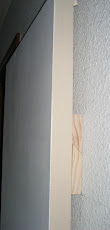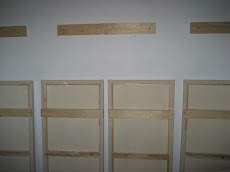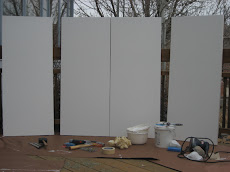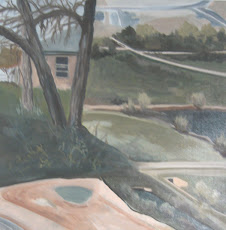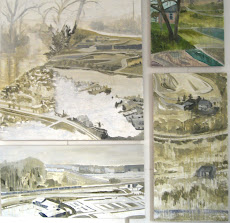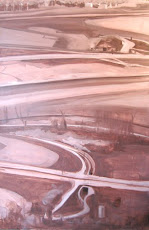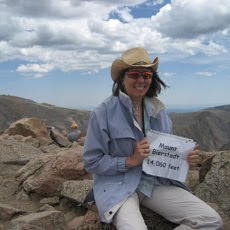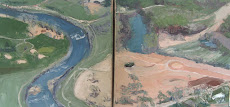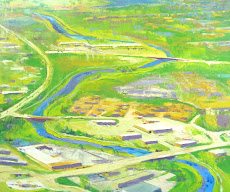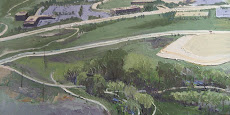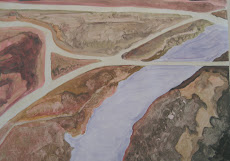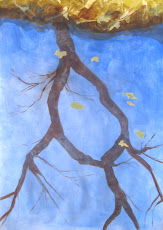My approach is similar to this in that I am also using landscape photos and collage-like process to create new images. Unlike Furunishi, I paint the images after combining them.
This leads to the question my mentor has taught me to ask: what can paint add to the image?
Why not just enlarge these combined photos and simplify my process?
In the process of painting the image is transformed into something I have visualized. My interpretation of the idea becomes more evident as I work with the image and the concepts I am seeking to make visible. As I leave out the unnecessary and add in the parts that are missing, I make the painting more specific to my ideas, and less about the location in which the photographs were taken. The marks that I make with paint contain my thoughts in a liquid form. I can work with the extremes of light to dark and transparent to opaque. The application of paint can reveal not only the motion of the painter's hand, but also the attitude with which he or she has approached the painting. The intensity or carelessness of the artist's handling of the paint becomes another form of communication. It can also serve to emphasize the ideas behind the painting, which in my case, are the transformation of the land and the multiple viewpoints from which the landscape can be viewed. Can the new beauty of the urban landscape compete with the picturesque rural landscape? Maybe they are both present depending on your point of view.


